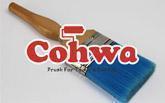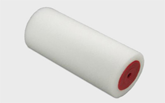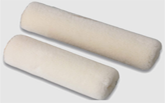Do you Know the Different Parts of a Brush?
Aug. 25, 2020As a Painting Tools Manufacturer, share with you. This illustration shows
what to look for when selecting a paintbrush. Along with selecting the correct
paint for your decorating job, a good brush will ensure you get the best finish.
The basic elements of a high-quality brush are materials and craftsmanship. The
materials that make up a brush include: the bristle, whether natural hog bristle
or synthetic; the reservoir; the heel; the ferrule; and the handle.
Nylon Paint Brush
Quality bristle is essential. Natural hog bristles come from Chinese boars and fall into three categories: natural white, natural black and natural grey. China bristles work best in oil and alkyd paints, varnishes, stains, shellacs and lacquers.
Synthetic bristle brushes also fall into three categories: Solid Round Tapered (SRT) Orel Tynex polyester, SRT polyester, and hollow polyester.The first is the most popular because of superior stiffness and retention.
SRT Orel Tynex polyester filament brushes work well in latex paints, oil and alkyd paints, and some stains and varnishes. Polyester filaments work in most paints including acrylics and alkyds. The ferrule is the metal piece that joins the bristle with the handle and works best when it is composed of stainless steel. Inside the ferrule is the reservoir. The reservoir is composed of wood strips that separate the bristles into rows, creating a small reservoir and maximising the amount of paint held in the brush.
Wooden handles are preferred by most painters as they minimise the penetration of liquids and reduce swelling if the brush is left in water. Lighter ergonomically designed handles are preferable, since they give the brush balance and facilitate control. Lighter handles also reduce hand cramping and fatigue.
So, select the right brush, and you may find the next painting project you tackle is a lot easier than you could have imagined.
Our company also has Nylon Paint Brush for sale, welcome to consult us.















